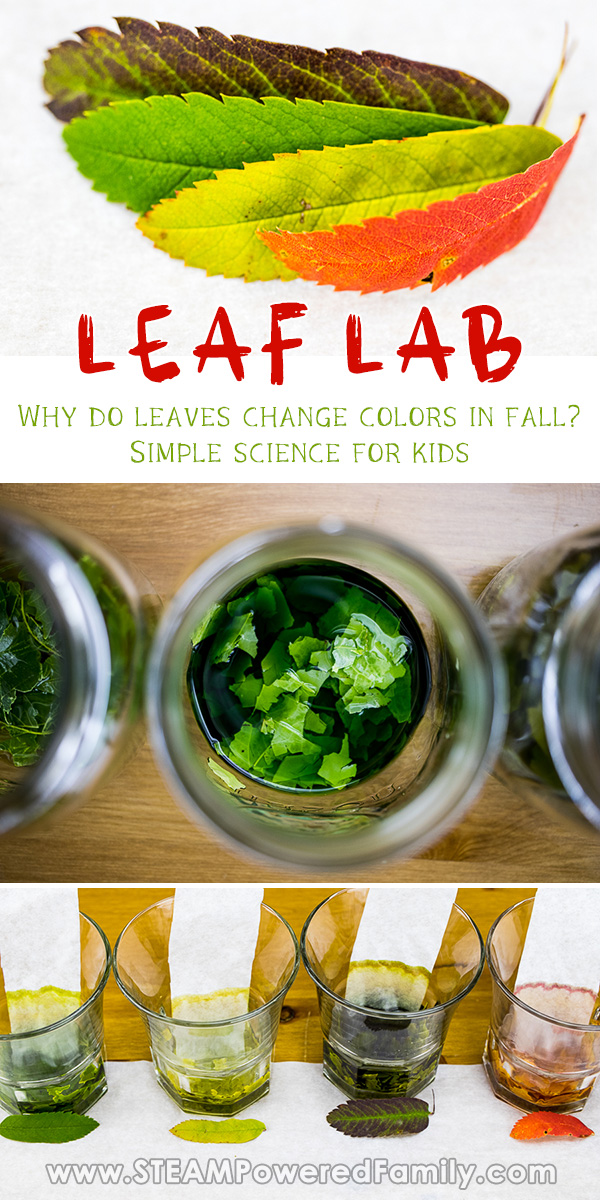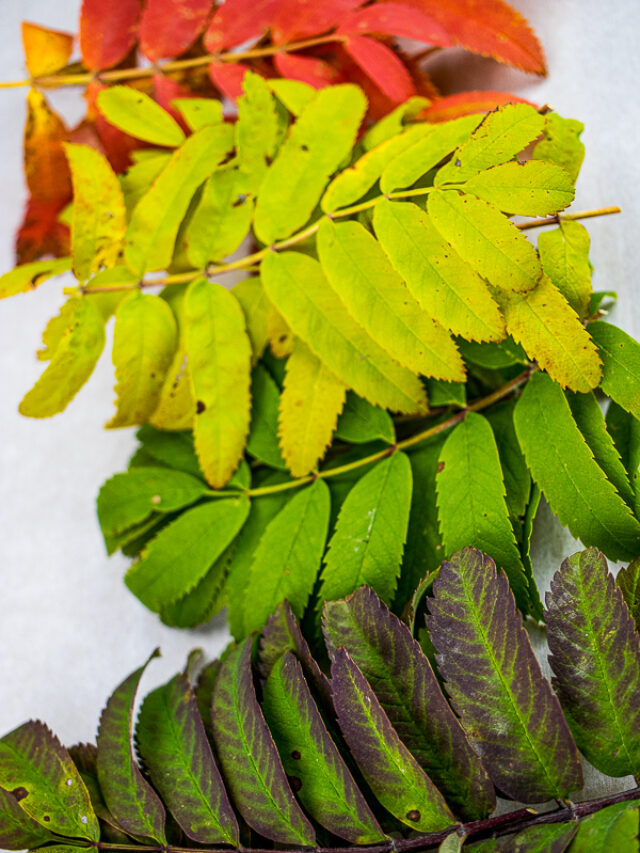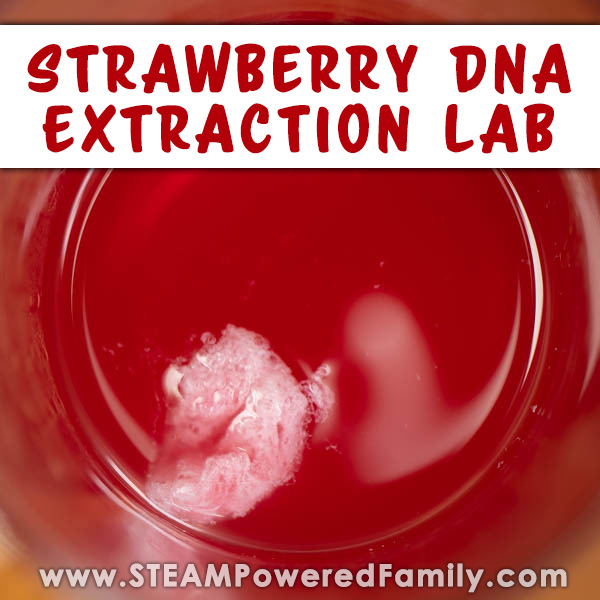Leaf Lab
Embrace the gorgeous colour of fall this year by conducting a science experiment that shows the colours leaves turn in the fall and explore the science behind this gorgeous transformation that occurs every autumn. We love a simple science experiment and this Leaf Lab is perfect for fall as we explore the big question: Why do leaves change color? Kids from preschool to high school will enjoy this easy and fun Fall science experiment!
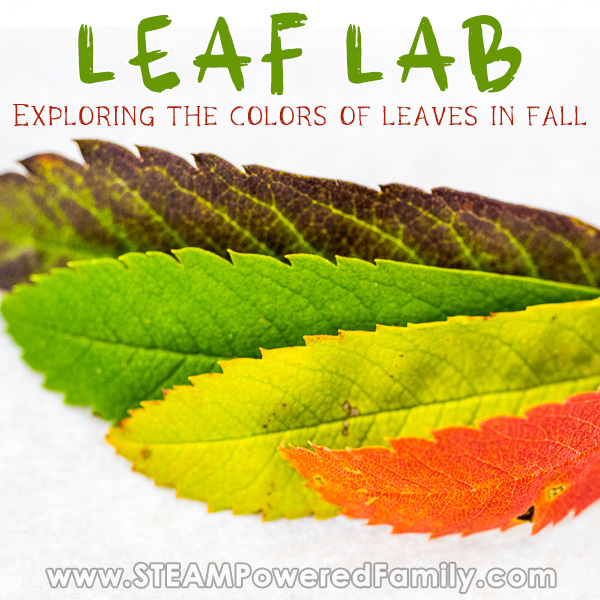
Disclaimer: This article may contain commission or affiliate links. As an Amazon Influencer I earn from qualifying purchases.
Not seeing our videos? Turn off any adblockers to ensure our video feed can be seen. Or visit our YouTube channel to see if the video has been uploaded there. We are slowly uploading our archives. Thanks!
I have a love-hate relationship with fall. I love the gorgeous colours and the crispness of the air. And don’t forget all the amazing freshly harvested fruits and vegetables.
But there is also the dread that means winter is coming, and when you live in a place with brutally cold temperatures and snow up to 8 months of the year, it makes the signs of it’s arrival, a little panic inducing.
It’s like a warning sign… GET OUTSIDE NOW!
That’s what makes this Fall Science Experiment so perfect. Not only do you get to learn something fascinating about nature, like exploring how leaves change color, but you also get to spend some time outside!
I highly recommend doing this experiment just as the leaves start changing, while some are still green, and others are at various stages of changing colours.
LEARNING EXTENSIONS EXPLORE MORE FALL STEM ACTIVITIES
Leaf Science Chromatography Experiment
When I first looked into this activity, I came across some sites claiming that this activity would reveal what colours the leaves turn in the fall. After doing a few tests we knew that claim was not accurate. Instead, what this activity does is separate out the active colours in the leaves. By active, we mean the colours need to be at least a little bit visible in the leaf. That means for the best results, try picking handfuls of leaves from the same tree but that are at different stages of changing colours. We have a Mountain Ash that gave us leaves in 4 different colour groupings.
Or you can pick different leaves, from different trees, but don’t expect colours to magically appear that are not visible already in the leaf with this simple science approach.
For a more advanced type of Leaf Chromatography experiment for your middle school and high school students, check out this Leaf Lab. We haven’t done this technique but it looks like it might provide a slightly different result from this more simple science, Leaf Chromatography experiment. And may reveal more of the hidden colour pigments in the leaves.
Our Experimental Method
With this experiment we started by doing the steps with leaves from different trees on our property. These are trees we know very well. Beloved trees we have watched move for the seasons for at least a decade. So we are very familiar with their fall colours.
That’s how we discovered that this experiment doesn’t show what colour the leaves will turn in the fall, and therefore doesn’t really answer our big question: Why do leaves change color? Our tree that we know turns a gorgeous red in the fall, did not show any red at all in the chromatography.
But interestingly, our purple leaf tree, that starts in the spring with green leaves, that turn purple in summer, then orange/yellow in fall, gave us the most dynamic chromatography. We even made a cool heart chromatography!
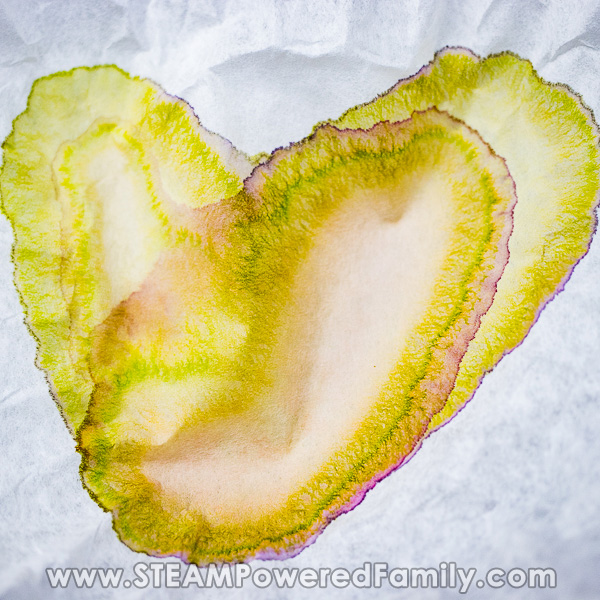
So our next step in the study we went to our Mountain Ash tree. A HUGE very loved, majestic part of our yard. It also possesses the most amazing array of colours as it enters fall. Right now it has green, yellow-green, purple-green and a gorgeous bright berry red. So many beautiful leaf colours in one massive tree!
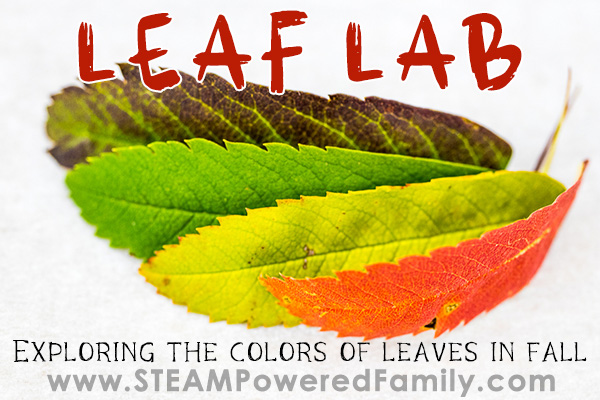
Then we redid the experiment. If it was true that the experiment would reveal what colours would appear in the fall, then all the chromatography should have revealed the same colours since the leaves were all from the same tree, picked at the same time, just at different stages of turning to the fall colours.
It turns out that wasn’t the case at all. It was only the active colours that were revealed. Which was a great finding! Which turned this Leaf Lab into an amazing journey of discovery and the scientific method.
Supplies
To do this fall leaf experiment you will need:
Leaves! See tips above for the best leaf selection
Jars with lids (or plastic wrap will work if you don’t have lids)
Rubbing Alcohol
Butter knife (or other item that can “mash leaves”)
Large bowl or dish that fits the jars
Hot water
Coffee filters
Plates
Scissors
DIRECTIONS
Time needed: 2 hours and 30 minutes
Reveal the secret colours of leaves with this science experiment.
- Collect leaves
Start by heading outside and collecting leaves. I used small bags to keep my leaves organized. In total we did 6 different types of leaves. You want to gather 4 to 6 leaves of each type. Try and get leaves that are at different stages of turning colour for the best results.
- Set up Your Experiment
Set out one jar for each type of leaf you collected. Into each jar start ripping up one type of leaf. You want to tear the leaves up nice and small. Really tear it up!
- Add Alcohol and Mash
Add just enough rubbing alcohol to cover the leaves, then using a knife or other utensil mash up the leaves into the alcohol even more. You should start to see the rubbing alcohol turning a bit green.
- Heat the Jars
Set the jars in a large dish or bowls. Add hot water to the bowl or dish and cover the jars with lids or plastic wrap.
- Wait
Now let them sit for approximately one hour. Give the jars a little swish every once in a while to help release the chlorophyll. Your alcohol should be turning a nice green. You can also refresh the hot water if it cools too much.
- Add the Filter Paper
Cut a coffee filter into quarters and place on a plate. Using a teaspoon or dropper add a couple of drops of the liquid to the tip of the filter.
- Wait
Wait approximately 30 min to one hour to see how the colours move up the filter paper and separate. Pretty cool!
- Wait longer
What happens if you leave it in the solution even longer? Maybe overnight? The colours will become more bold and larger, making the colours easier to see.
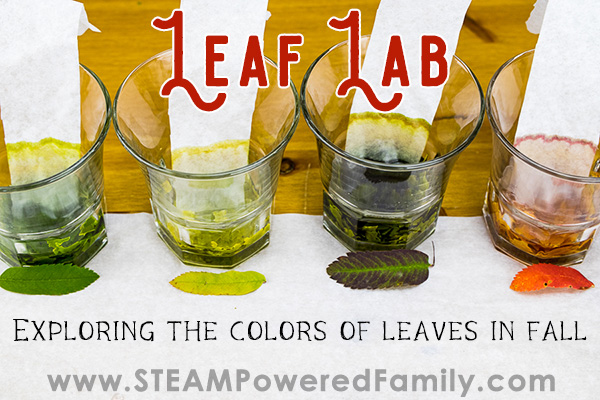
The Science Of Leaf Color Changes In Fall
Let’s dig into the big question: Why do leaves change color?
Why are Leaves Green?
Leaves, like all green plants, contain Chlorophyll. Chlorophyll is the molecule that traps the energy of the sun and is called a photoreceptor. It is found in the chloroplasts of green plants, and is what makes green plants, green. It is also a key part of photosynthesis which is what allows plant to get energy from sunlight.
Leaf Coloring
Leaves are actually more colours than just green but Chlorophyll is so dominant most of the summer that its green colour covers up all the other natural colours in the leaves. We can separate the colours of a leaf by doing this leaf chromatography science experiment.
We have done chromatography experiments before, check out our gorgeous Circuit Chromatography Flowers that light up!
In this science experiment we used rubbing alcohol and two types of energy to separate the colours. We used mechanical energy by ripping up the leaves and mashing them, plus heat energy from the hot water.
Look closely at the rubbing alcohol, do you see any other colours in there?
Most commonly you will see green, but depending on the type of leaf you may also see purple, red, yellow, or orange.
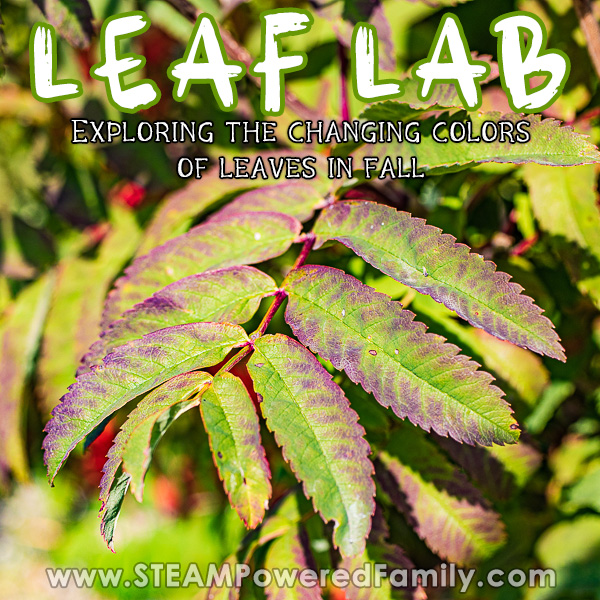
What about Purple Leaves?
First a bit of science behind purple leaves. Some plants have a lot of compounds called anthrocyanins which can be red or purple in color. If a plant has enough anthrocyanins, the purple will block out the green color even though the chlorophyll is still there. With this particular type of tree we see that in action because the leaves are green in the spring and turn purple for the summer.
During our walk about collecting leaves we came upon a tree with purple leaves. These trees are quite common around here and we were excited to see how it performed in this experiment.
It was interesting to note that the rubbing alcohol turned green initially, then became purple over time.
Another cool fact about purple leaves, the purple colour protects the leaves from sun damage. It’s like tree sunscreen! So cool!
Leaf Coloring Vocabulary Words
Yellow leaves have pigments called xanthophyll.
Carotenoids are the pigment in orange leaves.
And, as we just learned, anthocyanins, give leaves intense red and purple colouring.
Plus of course we have chlorophyll which gives leaves their green colour.
When looking at your chromatography, each colour in your papers is created by those molecules.
What Makes Leaves Change Color?
OK, time for the big question… what makes leaves change colour? As we know, Chlorophyll gives leaves their green colour and is so dominant that it hides the other colours in the leaves during the spring and summer. But in the fall, chlorophyll in the leaves breaks down, finally allowing the it’s other natural colours to have their moment in the sun!
The beautiful reds, yellows, and oranges might be short lived before the leaves fall to the ground. This year, think about the amazing science behind those changing colours as the trees around you put on their colourful fall displays.
